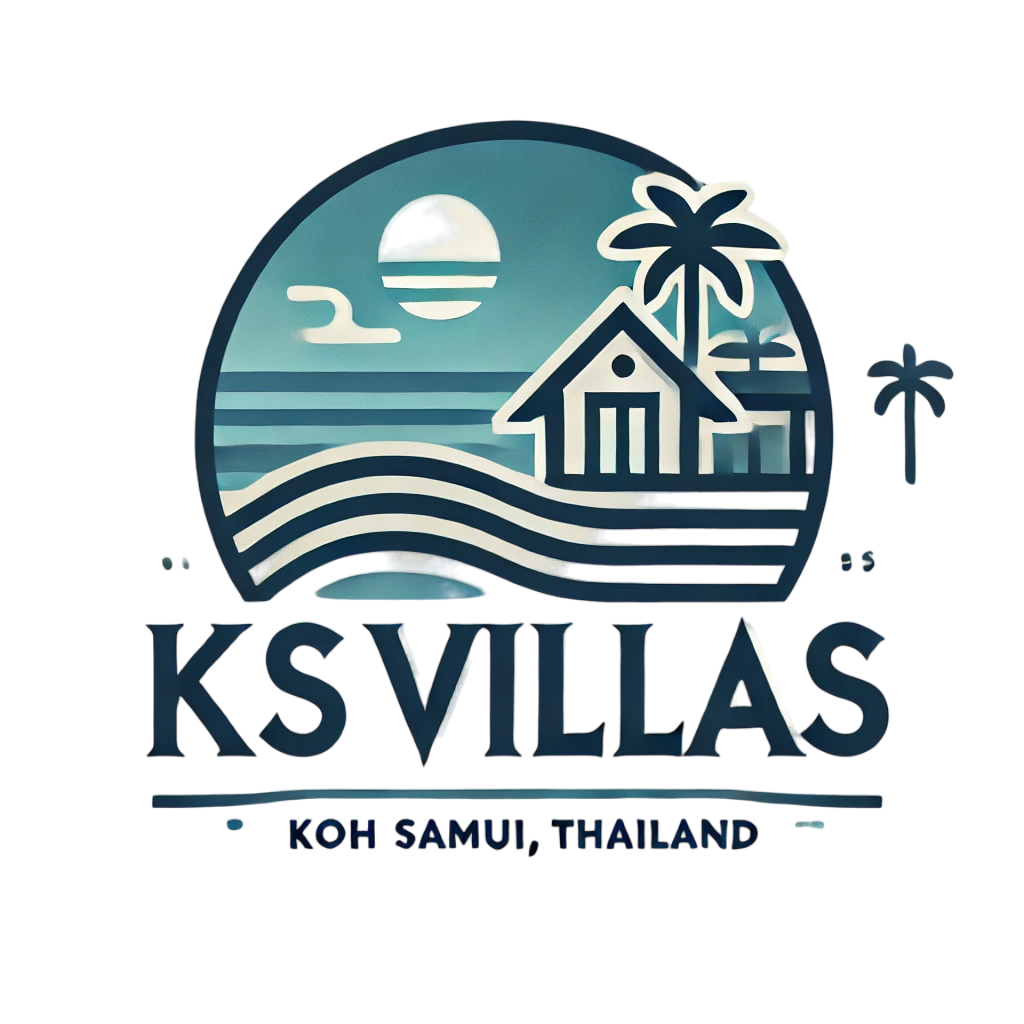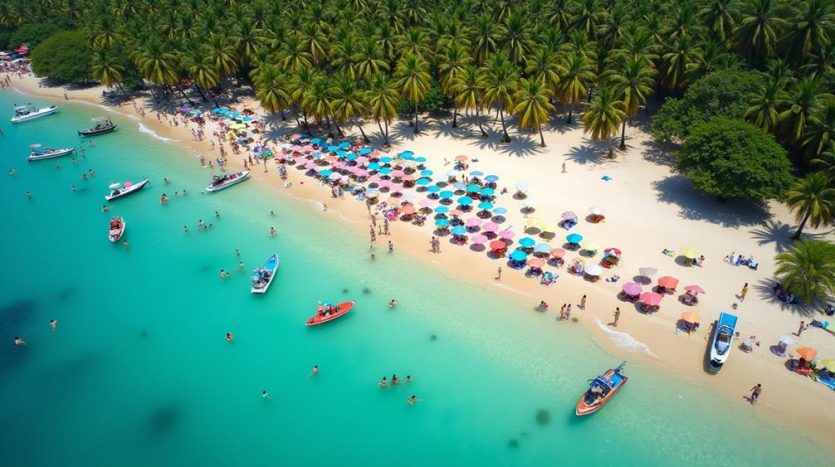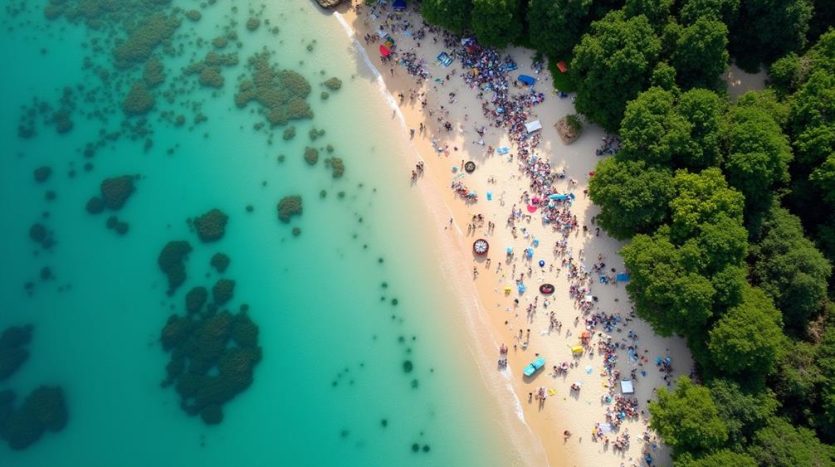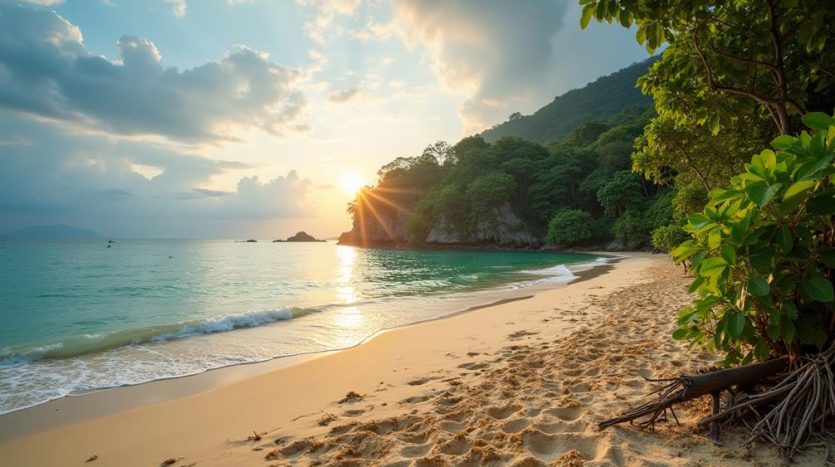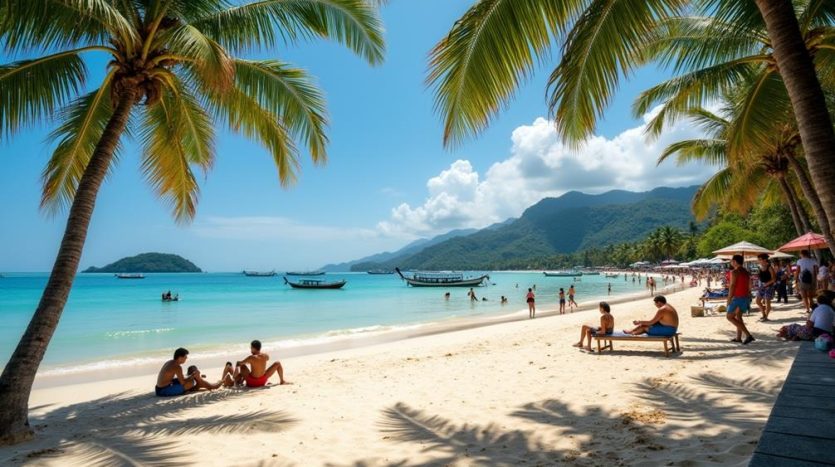Is Koh Samui Overcrowded?
Imagine Koh Samui so packed you can barely move an inch; that might be an exaggeration, but it's not far from the truth during peak season. With tourists flocking in from December to April, the surge strains local infrastructure, causing congestion, particularly in areas like Chaweng and Lamai Beaches. This influx affects not just the island's roads but also its fragile ecosystems and local communities. You might wonder how this vibrant yet crowded atmosphere impacts the island's authenticity and sustainability. So, what are the real consequences of this tourism boom?
Key Takeaways
- High season from December to April sees significant overcrowding in popular areas like Chaweng Beach and Lamai Beach.
- Increased tourist numbers strain local transportation, causing congestion and overcrowded tuk-tuks and taxis.
- Overcrowding during high season leads to vibrant but densely packed beaches and attractions.
- Local infrastructure, including water supply and waste management, struggles with increased demand from tourists.
- Environmental concerns arise from overcrowding, including damage to coral reefs and increased pollution.
Tourist Influx Trends
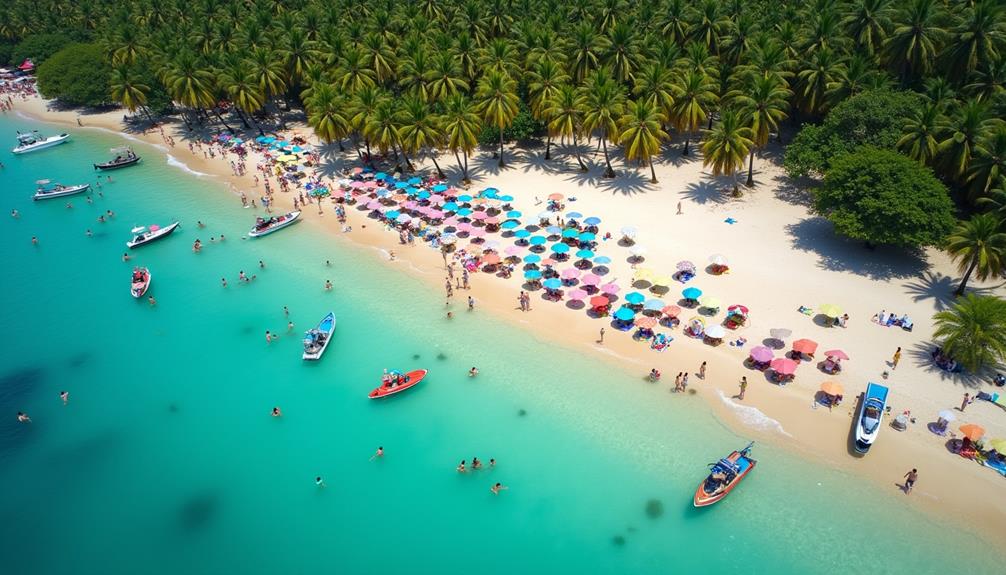
Tourist Influx Trends
Although Koh Samui has long been a favorite destination for travelers, recent years have seen a noticeable shift in tourist influx trends. You might think the island's always bursting at the seams with sun-seekers, but seasonal fluctuations paint a different picture.
During the high season, from December to April, the island is buzzing with visitors escaping chilly winters. But come low season, the rainclouds roll in, and the tourist numbers dwindle faster than your resolve at an all-you-can-eat buffet. Despite the budget-friendly experience Koh Samui offers, these seasonal changes substantially affect the number of visitors.
Visitor demographics have also evolved. Once dominated by backpackers and gap-year students, Koh Samui now attracts a more diverse crowd. Families, honeymooners, and even digital nomads are flocking to the island.
You've got retirees trying to relive their youth and millennials Instagramming every coconut they sip. This mix adds a vibrant, albeit crowded, atmosphere.
What does this mean for you? If you're planning a trip, timing is everything. Visit during high season for lively beach parties, but brace yourself for crowded spots.
Opt for low season if you prefer a quieter, albeit wetter, experience—just remember to pack an umbrella! Whether you're a sun worshiper or a rain dancer, Koh Samui has a season for you.
Impact on Local Infrastructure
The surge in tourism on Koh Samui has undeniably put a strain on the island's infrastructure. Imagine this: you're trying to navigate the narrow roads, only to get stuck behind a parade of rental scooters. Yep, transportation challenges are real. With more tourists than ever, the local roads are feeling more stressed than you after your third cup of coffee.
Popular areas like Chaweng Beach and Lamai Beach are especially congested, making it harder to enjoy the serene beach vibes.
Now, let's talk about resource allocation. Ever tried to take a shower only to find out there's no water? Koh Samui's water supply and waste management systems are groaning under the weight of the tourist influx.
The island's power grid, too, is flickering like it's had one too many margaritas.
Then there's the public transport—or lack thereof. Tuk-tuks are packed, and taxis? Good luck finding one that doesn't charge you an arm and a leg.
And don't even get started on the ferry services; those boats are busier than a bee in a flower shop.
Environmental Concerns
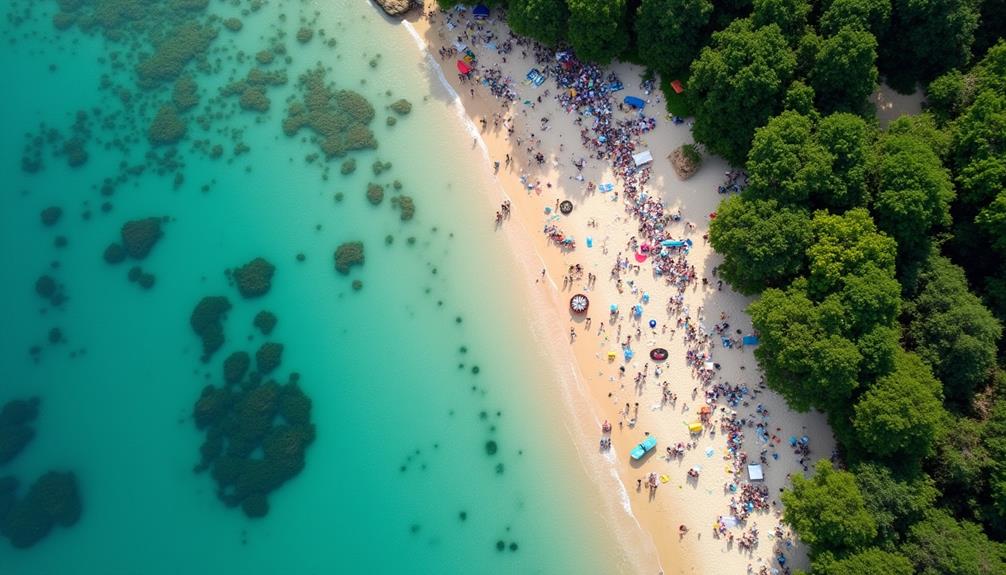
Picture a pristine beach with crystal-clear waters and vibrant coral reefs.
Now, imagine that paradise under threat due to overcrowding. Koh Samui, once a haven for nature lovers, faces significant environmental concerns. The island's ecosystem is struggling to keep up with the influx of tourists.
Koh Samui's public transport system is less organized, leading to higher travel costs and increased traffic congestion, which further exacerbates the environmental strain.
But, don't worry, there's hope yet!
You can contribute to wildlife conservation and sustainable tourism by making mindful choices. Here are some key points to reflect on:
- Coral Reef Damage: Excessive boat traffic and careless snorkeling can harm delicate coral ecosystems.
- Waste Management: More visitors mean more trash. Inadequate waste disposal systems can lead to pollution.
- Wildlife Disruption: Noise and light pollution from increased human activity can disturb local wildlife.
- Water Resources: High demand for fresh water can strain local supplies, affecting both residents and the environment.
Community and Culture
Koh Samui's vibrant community and rich cultural heritage are among its most compelling attractions. You've probably heard about the island's stunning beaches, but the real magic lies in its people and traditions.
Imagine joining a local festival like Songkran, the Thai New Year, where you'll find yourself drenched in water and laughter. Or, if you've got a flair for the dramatic, the Buffalo Fighting Festival offers a unique peek into local traditions that have been passed down for generations.
You might think these cultural festivals are just for show, but they're integral to the island's identity. These events aren't just for tourists; they're a time for families to come together, share meals, and celebrate their heritage.
If you're lucky, you might even get invited to a local's home for a feast—just be prepared for an array of spicy dishes that'll challenge your taste buds.
But here's the catch: as more tourists flock to Koh Samui, there's a risk these traditions might lose their authenticity.
Preservation Efforts
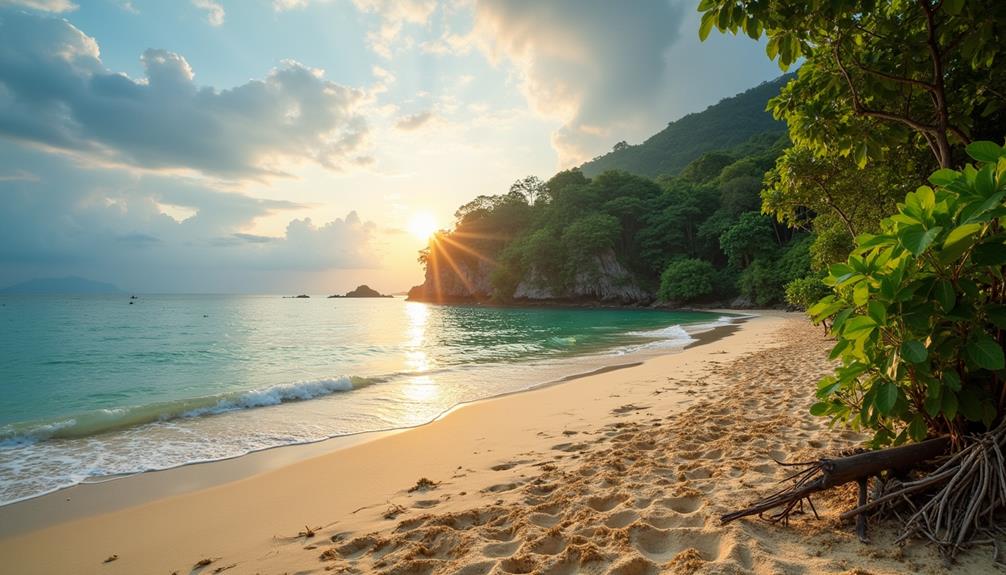
As you soak in the rich culture and community spirit of Koh Samui, it's hard not to notice the growing impact of tourism on the island's traditions and environment.
Thankfully, there are numerous preservation efforts aimed at balancing the influx of visitors with the island's need for sustainable tourism and conservation initiatives.
Here's how Koh Samui is stepping up its game:
- Marine Conservation: Local organizations are actively working to protect the island's coral reefs and marine life. Snorkel responsibly, folks!
- Eco-Friendly Resorts: Many resorts now adopt green practices, like solar energy and waste reduction, making your stay both luxurious and low-impact.
- Community-Based Tourism: Engage with local communities through authentic experiences that support traditional crafts and livelihoods.
- Reforestation Projects: Tree-planting drives aim to restore native forests, enhancing both biodiversity and those Instagram-worthy views.
These efforts show that Koh Samui is committed to sustainable tourism.
It's not just about preserving the natural beauty but ensuring that the local culture thrives too.
